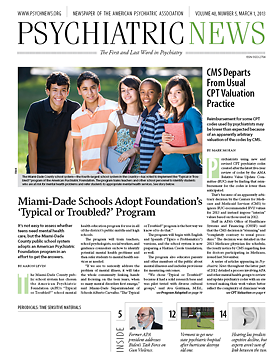New developments in neuroimaging and CSF studies of Alzheimer’s disease raise the question of what now constitutes the standard of care for the diagnostic workup for this condition. The National Institute on Aging (NIA) and the Alzheimer’s Association (AA) have proposed new diagnostic criteria for mild cognitive impairment (MCI) due to Alzheimer’s disease (AD) and dementia due to AD in which the disease is conceptualized along a spectrum from preclinical stages through MCI to dementia. Under the NIA/AA criteria, preclinical AD is diagnosed in individuals who are asymptomatic or subtly symptomatic and are “biomarker-positive.”
Candidate biomarkers referenced in the criteria include the following:
CSF assay of Aβ42 protein and tau proteins
Fluorodeoxyglucose (FDG) PET imaging
CSF assays of Aβ42, tau, and phosphorylated tau (P-tau) are already clinically available. They are used in specialty memory-disorder clinics and research settings to provide additional evidence for the differential diagnosis of AD. Volumetric MRI is also clinically available, but the standards for interpretation are not well established. FDG PET imaging has been available for years and is reimbursable for differentiating AD from other forms of dementia such as frontotemporal dementia.
In recent months, a great deal of media attention has been paid to amyloid PET imaging, in which a ligand is used that binds to aggregated amyloid and deposited neuritic plaque. The pioneering work in this area was accomplished with Pittsburgh compound B (11C-PiB). Currently, three 18F-labeled molecules—florbetapir, florbetaben, and flutemetamol—are under active investigation. These compounds have the advantage over the 11C-labeled molecules in having a sufficiently long half-life that they can be express-shipped between states, making them more widely accessible.
Both florbetapir and florbetaben have been approved by the FDA, and amyloid PET imaging became available for clinical use in 2012. From the FDA’s standpoint, one issue is whether adequate training has been provided to radiologists and other specialists in the proper interpretation of imaging data. The application for flutemetamol was accepted by the FDA in early January. The fact that amyloid is seen in the brains of cognitively normal individuals has raised some controversy; these compounds do not distinguish plaque from neuritic (pathological) plaque. Furthermore, it is not yet known whether normal individuals with plaque-positive scans will progress along the AD continuum over time. For these reasons, the best initial use of amyloid imaging will be to rule out AD as the disease process in a symptomatic individual with a negative scan. Also at issue is that neurofibrillary tangle burden has been found to be more predictive of cognitive impairment than plaque burden. At least one ligand now under investigation—18FDDNP—enables visualization of both plaque and tangles and of prion protein.
As of this writing, these biomarkers are appropriately reserved for research settings. This is not to say that laboratory testing has no place in the diagnostic workup of dementia. The utility of routine laboratory evaluations to exclude reversible causes of cognitive impairment are well established. In addition, brain imaging (preferably MRI) is a standard component of the workup. In the early stages of disease, MRI or CT is often normal, but progressive atrophy is a helpful diagnostic finding.
The NIA/AA criteria make no mention of ApoEε allele testing, an intentional omission. It is known that the ε4 allele is a risk factor for late-onset AD, while the ε2 allele is thought to confer some protection. APOEε testing may increase the specificity of diagnosis in a patient who meets clinical criteria for AD. In this case, the presence of the ε4/ε4 genotype increases the probability that AD is the correct diagnosis to about 97 percent. Nonetheless, ApoEε is a poor predictor of whether the disease will develop in an asymptomatic individual. ■

